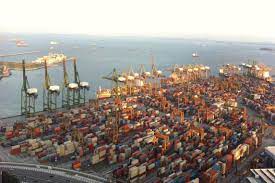As economies worldwide struggle to untangle unforeseen congestions in the global supply chains, one of the busiest ports in the world is currently backing a modernization plan to provide next-gen solutions.

Singapore is forging ahead with a $14 billion assignment to build the biggest automated port in the world by 2040 — one that is double the existing space and boasts drones and driverless vehicles. The city-state kick-started the operations at two new berths in 2021, and the construction work will continue in the next phase.
It’s becoming urgent for ports to add speed and capacity as the COVID-19 pandemic has altered the nature of supply chains. The just-in-time shipping system has broken down as exporters from Asia encounter obstacles getting the goods transported to customers from Europe and the US. The situation worsened in 2022 with extensive Covid-19 lockdowns in China and the Russia-Ukraine war.
Ports are the visible choke points in the $22 trillion merchant trade arena, and a long-due transformation will need to tackle a range of problems. Situated in the Strait of Malacca, Singapore is a regular pit stop on the container channels that link Asian factories to its consumers in Europe. The port that handled the most trans-shipped cargo in 2020 has come through the ongoing pandemic in better shape than its peers.
Singapore is a difficult place to start an expansion. However, the city-state, experiencing rising competition from rivals like Shanghai, had begun allocating funds in 2013 to reclaim land required to build a new port, Tuas, on the country’s west coast. The port is expected to double up to 65 million twenty-foot equivalent units (TEU) by 2040.
Read Also: Greece Offers Ships To Export Grain From Blocked Ukrainian Ports, NATO Says
The plan was in place long before the supply-chain upheaval. The expansion has provided space to run operations and carry the city beyond the pandemic, said the Maritime and Port Authority chief executive officer, Ley Hoon Quah.
Singapore expects to operate automated guided vehicles to move more containers between the berths and gardens where ships wait. A human driving a truck will use sensors and wireless communications to spearhead a convoy of driverless vehicles out of and to the port. Drones will facilitate shore-to-ship deliveries and assist security guards with checks.
The technology will save the manpower amidst the global labour crunch. However, the Singapore port wants to integrate information systems further, empowering it to track cargo and communicate the demand surges to its supply-chain players.
Singapore’s master plan is to stay ahead of its competition, as global delays compel ships to rethink where along their route to stop. The port’s goal is to make itself more efficient for vessels to carry out their needs.
Kindly like us on Facebook















